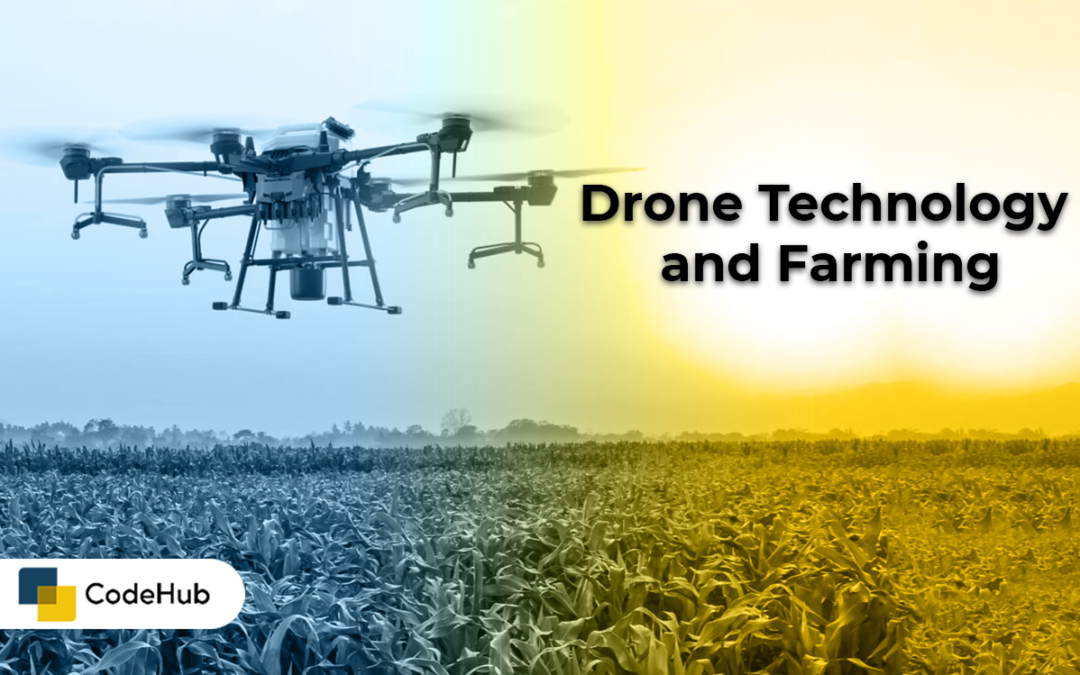The sky is not the limit for farmers who want to harness the power of drone technology. Drones, or unmanned aerial vehicles (UAVs), are flying machines that can be controlled remotely or autonomously, using software and sensors. Drones can perform various tasks that can help farmers improve their farming practices, such as crop monitoring, crop spraying, crop seeding, livestock monitoring, and livestock management. Drones can offer many benefits for farmers, such as increased productivity, efficiency, sustainability, and profitability. In this blog post, we will explore some of the ways that drone technology can transform farming in the digital age.
One of the main applications of drone technology in farming is crop monitoring and mapping. Crop monitoring and mapping involves collecting and analyzing data on various aspects of crop growth and health, such as plant height, leaf area, chlorophyll content, biomass, yield, moisture level, nutrient status, pest infestation, disease infection, weed invasion, etc. This data can help farmers optimize their crop management strategies, such as irrigation scheduling, fertilizer application, pest control intervention, harvest timing, etc. Crop monitoring and mapping can also help farmers create detailed and accurate maps of their fields, which can be used for planning, documentation, and evaluation purposes.
Traditionally, crop monitoring and mapping are done manually or with satellite imagery. However, these methods have some limitations, such as high cost, low resolution, low frequency, weather dependency, data latency, etc. Drones can overcome these limitations by providing high-resolution, high-frequency, low-cost, and real-time data collection and analysis. Drones can also cover larger areas faster and more efficiently than manual methods. Drones can also adapt to different terrains and crop conditions by adjusting their flight altitude and speed. Drones can also integrate with various sensors and cameras to capture different types of data, such as visible light, infrared light, multispectral light, thermal light, etc.
There are many companies that provide drone-based crop monitoring and mapping solutions for farmers. For example, [PrecisionHawk] is a company that offers a comprehensive platform for drone-based data collection and analysis for agriculture. PrecisionHawk’s platform includes drones equipped with advanced sensors and cameras; software for flight planning, data processing, and data visualization; and cloud-based storage and analytics. PrecisionHawk’s platform can help farmers monitor their crops in real-time and generate actionable insights for crop management.
Another application of drone technology in farming is crop spraying and seeding. Crop spraying and seeding involves applying chemicals or seeds to crops or soil in a precise and efficient manner. Crop spraying and seeding can help farmers protect their crops from pests and diseases; enhance their crop growth and quality; increase their crop yield; reduce their water consumption; save their time and labor; etc.
Traditionally, crop spraying and seeding are done with ground-based machines or manned aircrafts. However, these methods have some drawbacks, such as high water consumption; high fuel consumption; high chemical wastage; low precision; low coverage; environmental pollution; health risks; etc. Drones can overcome these drawbacks by providing low water consumption; low fuel consumption; low chemical wastage; high precision; high coverage; environmental protection; health safety; etc. Drones can also target specific areas or plants that need more or less treatment by using software and sensors. Drones can also operate in different weather conditions and terrains by using GPS and obstacle avoidance systems.
There are many companies that provide drone-based crop spraying and seeding solutions for farmers. For example, [DJI Agras] is a drone that can spray up to 10 hectares per hour with a 10-liter tank capacity. DJI Agras has eight rotors that provide stable flight and powerful propulsion. DJI Agras has four nozzles that can spray up to 1.5 liters per minute with a spray width of 4 to 6 meters. DJI Agras has a radar system that can detect the terrain height and adjust the flight altitude accordingly. DJI Agras has a smart mode that can plan the optimal flight route based on the field shape and size.
A third application of drone technology in farming is livestock monitoring and management. Livestock monitoring and management involves tracking and managing the location, movement, behavior, and health of animals in a farm. Livestock monitoring and management can help farmers improve their animal welfare, productivity, and security; reduce their losses; save their time and labor; etc.
Traditionally, livestock monitoring and management are done manually or with radio-frequency identification (RFID) tags. However, these methods have some limitations, such as high cost; low accuracy; low frequency; limited range; data latency; etc. Drones can overcome these limitations by providing low cost; high accuracy; high frequency; unlimited range; real-time data collection and analysis. Drones can also cover larger areas faster and more efficiently than manual methods. Drones can also integrate with various cameras, microphones, and speakers to capture different types of data, such as visual, audio, and verbal.
There are many companies that provide drone-based livestock monitoring and management solutions for farmers. For example, [CattleWatch] is a company that offers a smart collar system for cattle that can be monitored and controlled by drones. CattleWatch’s system includes collars equipped with sensors and transmitters; drones equipped with cameras and speakers; and software for data processing and visualization. CattleWatch’s system can help farmers track their cattle’s location, movement, behavior, and health; alert them of any issues or anomalies; herd their cattle; deliver food or medicine; or scare away predators.
Drone technology is a game-changer for farming. It can help farmers save time, money, and resources, while increasing their output and quality. It can also help farmers cope with the challenges of climate change, population growth, food security, and environmental protection. Drone technology is not only for the future but also for the present.

